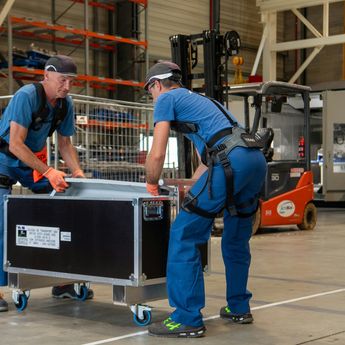Lightweight and high-strength materials have consistently played a key role in the construction of fuel-efficient and high-performing aircraft. Today, bio-composites—made of raw materials of biological origin—are giving engineers new insight on how to improve the environmental performance of future aircraft.
It may be hard to believe, but five decades ago, up to 70% of an aircraft was made of a single material: aluminium. Lightweight, inexpensive and widely available, aluminium was used in the construction of a variety of aircraft components, from the fuselage to other main engine parts. Since then, other cutting-edge materials have improved aircraft design, from metals (titanium, steel, new AI alloys) to composites (carbon and glass fibre, polymeric and epoxy resins).
Today, a new class of highly performant materials—bio-composites—is emerging to offer even more exciting possibilities for improved environmental performance as engineers aim to unlock their potential for use in future aircraft.
Increasingly used in industrial applications due to their numerous advantages, bio-composites are lightweight, flexible, cost-effective, and recyclable.
Bio-composites: lightweight and recyclable
Bio-sourced composite materials are formed—like today’s composites—by a matrix (resin) and a fibre, but of biological origin. Increasingly used in industrial applications due to their numerous advantages, they are lightweight, flexible, cost-effective and recyclable.
The raw materials for bio-composites are derived from natural renewable resources: biomass, plants, crops, micro-organisms, animals, minerals and bio-wastes. Chemical and/or mechanical conversion is required to transform these raw materials into bio-composites, which can be used alone or in complement to standard materials, such as carbon and/or glass fibre.
Today, bio-composites can be composed of one or several of the following components:
-
Natural fibres: These fibres can be obtained from animals, plants or minerals. They do not require a carbonisation process (i.e. the conversion of an organic substance into carbon or a carbon-containing residue).
-
Biomass carbon fibres: Biomass (i.e. algae, cellulose, lignin) is used to create feedstock and raw materials for further transformation into fibres and resins.
-
Bio-resins: Resins are highly viscous substances that are converted into polymers (i.e. materials). Bio-resins are made of biological origin, derived mostly from plant oils, biomass or bio-wastes.
In the aerospace industry, bio-composites could be applied in the following areas:
- Cabin and cargo: These applications require advanced properties relating to Flammability, Smoke Density and Toxicity (FST) and heat release.
- Primary and secondary structures: These applications involve high structural loads and thus require improved mechanical performance and durability.
- Auxiliary materials: These applications require functionality for non-flying materials or any means used for the production of composite components in industrial plants.
A look at raw materials in bio-composites

Sugar cane waste, also known as “bagasse,” is a dry, pulpy material that remains after extracting juice from sugar cane stalks. Because sugar cane is widely available and a highly efficient converter of solar energy, it is capable of yielding large volumes of biomass.
Sugar cane waste is an excellent source of cellulose fibres, which can be used as “filler” in bio-composites. It can also be used in bio-based Furan resins, which are obtained by chemical conversion or bio-refinery. Furan bio-polymers, in combination with suitable natural or recycled fibres (e.g. recycled carbon fibre), could be used for aircraft interiors.
From microscopic species to large seaweeds, water algae are simple photosynthetic organisms capable of binding CO2 from the atmosphere and transferring it to biomass.
Water algae, like other biomass, could be used as a carbon feedstock to replicate the monomers used to produce today’s carbon fibre precursors or resins in standard composites. This approach could thus enable bio-composites to offer the same mechanical properties as existing composites for aircraft applications.

Basalt fibres are made of volcanic rock, mainly found in the lunar maria on Earth’s Moon. Non-hazardous with excellent shock and fire resistance, basalt fibres have similar mechanical properties to glass fibres, but with the advantage of a simpler manufacturing process due to their less-complex composition.
Fibres produced directly from lunar rocks could be used for a variety of purposes. This includes stabilising the 3D-printed structure of the lunar station, generating thermal insulation, improving filter systems and providing textiles for astronaut suits.

Lightweight, fast-growing and highly elastic, bamboo is a natural composite material composed of cellulose fibres embedded in a lignin matrix.
Natural bamboo fibres combined with bio-based or standard resins could deliver many benefits. These include reducing environmental impact and improving mechanical performance.
Read more Innovation news
Continue Reading

Airbus and partners complete successful wake energy retrieval trials
Press Release
Innovation
Airbus and partners complete successful wake energy retrieval trials
Combating information warfare: How Airbus is helping win the fight for the truth
Web Story
Defence

Powering production and protecting people with exoskeletons
Web Story
Innovation

Airbus and MTU Aero Engines advance on hydrogen fuel cell technology for aviation
Press Release
Innovation
Airbus and Critical Software explore strategic partnership in embedded software…
Press Release
Innovation

